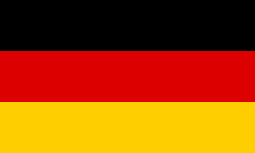2017 Pingshan Open – Men's Singles
Dudi Sela was the defending champion but chose not to defend his title.
| Men's Singles | |
|---|---|
| 2017 Pingshan Open | |
| Champion | |
| Runner-up | |
| Final score | 7–6(8–6), 6–4 |
Yūichi Sugita won the title after defeating Blaž Kavčič 7–6(8–6), 6–4 in the final.
Seeds








Draw
Key
- Q = Qualifier
- WC = Wild Card
- LL = Lucky Loser
- Alt = Alternate
- SE = Special Exempt
- PR = Protected Ranking
- ITF = ITF entry
- JE = Junior Exempt
- w/o = Walkover
- r = Retired
- d = Defaulted
Finals
| Semifinals | Final | ||||||||||||
| 6 | 6 | 6 | |||||||||||
| 5 | 2 | 2 | |||||||||||
| 6 | 66 | 4 | |||||||||||
| 2 | 78 | 6 | |||||||||||
| PR | 6 | 4 | 3 | ||||||||||
| 2 | 4 | 6 | 6 | ||||||||||
Top half
| First Round | Second Round | Quarterfinals | Semifinals | ||||||||||||||||||||||||
| 1 | 3 | 6 | 77 | ||||||||||||||||||||||||
| 6 | 3 | 60 | 1 | 6 | 6 | ||||||||||||||||||||||
| 4 | 0 | 2 | 4 | ||||||||||||||||||||||||
| 6 | 6 | 1 | 6 | 5 | 3 | ||||||||||||||||||||||
| WC | 3 | 6 | 6 | 6 | 2 | 7 | 6 | ||||||||||||||||||||
| 6 | 4 | 3 | WC | 1 | 2 | ||||||||||||||||||||||
| 3 | 1 | 6 | 6 | 6 | |||||||||||||||||||||||
| 6 | 6 | 6 | 6 | 6 | 6 | ||||||||||||||||||||||
| 4 | 6 | 5 | 6 | 5 | 2 | 2 | |||||||||||||||||||||
| 1 | 7 | 4 | 4 | 6 | 2 | 77 | |||||||||||||||||||||
| Q | 6 | 6 | Q | 3 | 6 | 65 | |||||||||||||||||||||
| 3 | 3 | 4 | 1 | 3 | |||||||||||||||||||||||
| WC | 2 | 2 | 5 | 6 | 6 | ||||||||||||||||||||||
| WC | 6 | 6 | WC | 1 | 2 | ||||||||||||||||||||||
| 3 | 2 | 5 | 6 | 6 | |||||||||||||||||||||||
| 5 | 6 | 6 | |||||||||||||||||||||||||
Bottom half
| First Round | Second Round | Quarterfinals | Semifinals | ||||||||||||||||||||||||
| 7 | 77 | 6 | |||||||||||||||||||||||||
| Q | 69 | 3 | 7 | 4 | 6 | 78 | |||||||||||||||||||||
| Alt | 2r | 6 | 4 | 66 | |||||||||||||||||||||||
| 5 | 7 | 3 | 6 | 5 | |||||||||||||||||||||||
| 5 | 2 | PR | 6 | 3 | 7 | ||||||||||||||||||||||
| PR | 7 | 6 | PR | 6 | 6 | ||||||||||||||||||||||
| 4 | 6 | 7 | 3 | 1 | |||||||||||||||||||||||
| 3 | 6 | 4 | 5 | PR | 6 | 4 | 3 | ||||||||||||||||||||
| 8 | 6 | 6 | 2 | 4 | 6 | 6 | |||||||||||||||||||||
| 4 | 4 | 8 | 6 | 6 | |||||||||||||||||||||||
| 0 | 1 | Q | 4 | 4 | |||||||||||||||||||||||
| Q | 6 | 6 | 8 | 2 | 4 | ||||||||||||||||||||||
| 6 | 6 | 2 | 6 | 6 | |||||||||||||||||||||||
| Q | 1 | 2 | 77 | 3 | 2 | ||||||||||||||||||||||
| WC | 2 | 2 | 2 | 65 | 6 | 6 | |||||||||||||||||||||
| 2 | 6 | 6 | |||||||||||||||||||||||||
gollark: I think making a less efficient Python program (with intensive mathy things done via numpy etc. which use bindings to C) makes a lot more sense than having a possibly-faster C program which takes several times longer to write, in most cases.
gollark: It's a poor performance decision (although you can just use pypy, which doesn't have that), sure.
gollark: Although all the tooling and CPUs are optimized for the C model, so good luck changing anything ever.
gollark: You could do that, but you might as well use a sane, nonC language.
gollark: Yes.
References
This article is issued from Wikipedia. The text is licensed under Creative Commons - Attribution - Sharealike. Additional terms may apply for the media files.